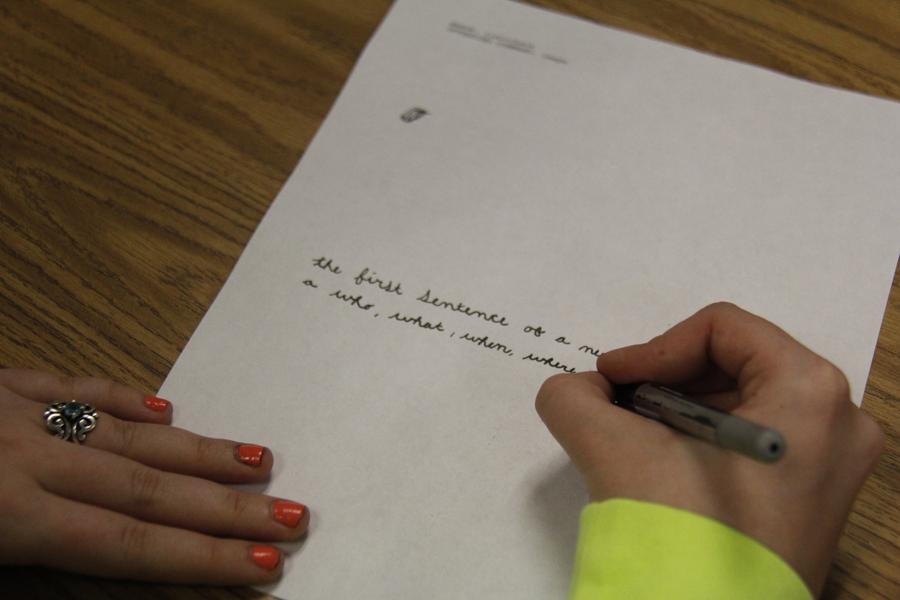The student tries his best to follow the instructions, but it’s difficult. He scribbles words down on the paper, only to erase them and start over again. He does this several more times before finally asking for help. What seems so simple for so many is proving to be hard to work with for those without the training from childhood.
Cursive handwriting is being removed from school curriculums all over the United States. Students in most states are no longer learning how to write in cursive at any grade level. The reasons for this change in the standardized coursework vary from state to state, but they mostly revolve around the notion that there is not time when preparing for state assessments to include an untested item such as cursive. More and more, cursive is being replaced by typing in grade schools across the nation, and there is a lot of controversy surrounding the topic of teaching cursive handwriting in school.
“Cursive is an important skill that students need to have,” journalism teacher Neda Morrow said. “I think it’s absolutely essential that cursive is taught in the elementary grades. Studies have shown that students are better able to remember what they write, especially when it’s in cursive. It engages multiple parts of the brain and allows for improvements in thinking, language, and memory. It worries me that I have students right now who cannot sign their own name.”
Only seven states have fought to keep cursive in the curriculum: California, Idaho, Indiana, Kansas, Massachusetts, North Carolina and Utah. These states claim that there is a direct correlation between the intelligence of a student and their ability to write in cursive. A recent study by the College Board backs up this claim, stating that students who write their SAT essay in cursive score higher on average than those who write in print.
“It’s an inherent concept that we look at people who can’t write in cursive as if they’re missing something, or as if part of their education is lacking,” Morrow said. “They may be the most intelligent person in the room, but I do think that it could have some social stigma for them with employers.”
Other concepts that have replaced cursive include typing and learning different computer programs. Typing is seen as a more current and useful skill to have. Some assert that cursive is just a relic of the past and has no actual use anymore.
“I think cursive and calligraphy are art forms that should be kept alive, but I don’t think they should be taught in schools,” senior Drew Austin said. “In a purely academic circumstance, knowing cursive isn’t really necessary. I wish typing had been more emphasized in the younger grades more than cursive. I think if young kids were put in front of a computer and taught to type, then they’d have a much easier time in college typing lecture notes and other papers.”
According to a recent poll conducted by Harris Interactive, 79% of adults and 68% of school-age children thought that cursive should still be taught in schools. More arguments in favor of cursive are that we would no longer be able to read historical documents in their original from, or even old letters written by ancestors.
“I think taking cursive out of school curriculums is a great loss, because most parents don’t have the time or won’t take the time to teach that skill,” AP English teacher Melanie McNiel said. “I just think that with all of the things our schools do, the basics of reading and writing and the teaching of those fundamental skills are what they should be attending to. “


















